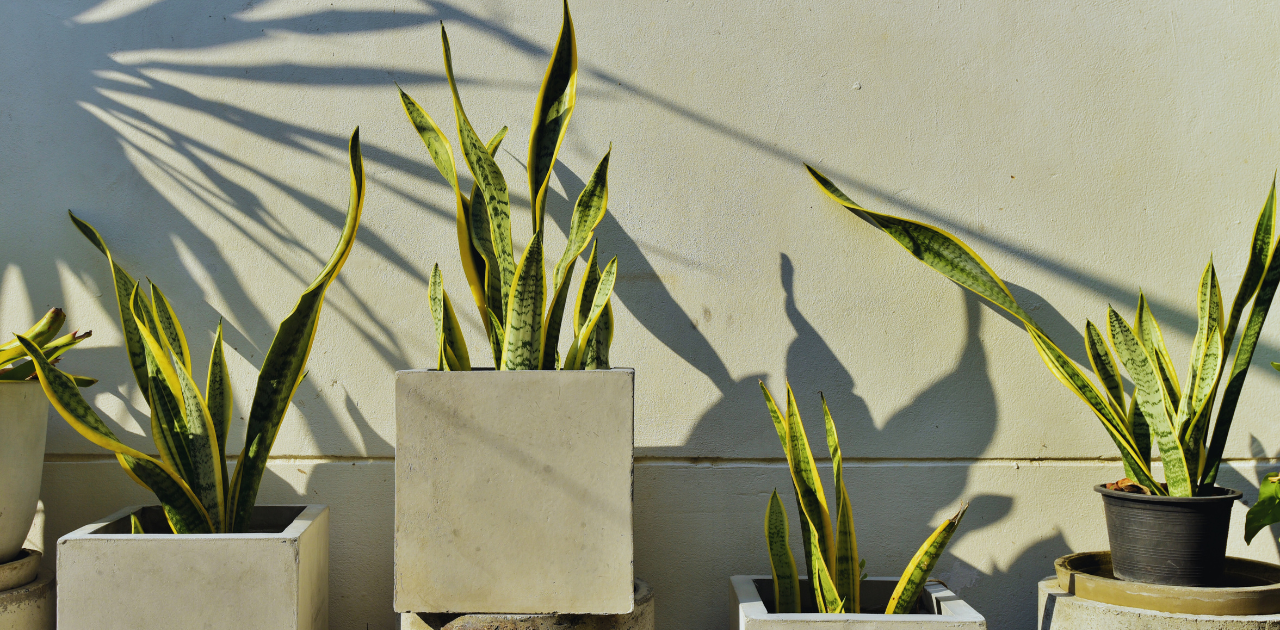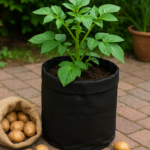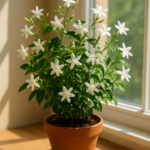Snake plants, also known as Sansevieria or mother-in-law’s tongue, are some of the most popular and resilient houseplants. Known for their striking upright leaves and air-purifying qualities, they are often hailed as one of the easiest plants to care for. But when it comes to light, how much does a snake plant need?
While snake plants are incredibly adaptable and can survive in a range of light conditions, understanding their ideal lighting is critical to promoting healthy growth. Whether you’ve got a bright, sunny spot or a dimly lit corner, knowing how to provide the right light can make all the difference. In this article, we’ll dive into everything you need to know about the snake plant’s light requirements—from thriving in low light to handling bright indirect light and avoiding common lighting mistakes. Whether you are a new plant parent or a seasoned indoor gardener, this guide will help you optimize light for your snake plant’s long-term success.
About Snake Plants

Snake plants, scientifically known as Sansevieria, are famous for their tall, rigid, sword-like leaves that grow upright from the soil. These plants come in various species, some featuring green, variegated patterns and others displaying yellow or silver edges along the leaves. Typically, the leaves are thick and fleshy, which allows them to retain water—a feature that makes snake plants highly drought-resistant.
One of the standout characteristics of snake plants is their ability to purify air by removing toxins such as formaldehyde and benzene, making them popular choices for homes and offices. Additionally, snake plants are low-maintenance, requiring minimal watering and care, which further adds to their appeal.
Natural Habitat and Adaptation
Originally native to West Africa, snake plants have adapted to thrive in harsh, dry environments. They are often found in rocky terrains or sandy soils, where water is scarce, and they have evolved to tolerate long periods without hydration. Their natural habitat experiences varying light levels, from direct sun to shaded areas, contributing to their remarkable adaptability in various indoor lighting conditions. This makes them a versatile choice for indoor gardeners, as they can quickly grow in low and bright indirect light environments.
The Role of Light in Plant Growth

Light is essential for plant growth because it powers photosynthesis, where plants convert light energy into chemical energy to produce food. Without sufficient light, plants cannot generate the energy they need to grow, produce leaves, or stay healthy. For most plants, including snake plants, the right balance of light is crucial to maintaining their shape, color, and vigor.
During photosynthesis, snake plants absorb light through their leaves, using chlorophyll to convert sunlight into sugars and oxygen. While water and nutrients from the soil also play a part in their growth, light is the primary driver. Too little light reduces photosynthesis, leading to stunted growth and pale or discolored leaves. On the other hand, too much intense light, especially direct sunlight, can cause sunburn, damaging the leaves and creating brown spots or crispy edges.
Why Light is Important for Houseplants
Light is crucial for houseplant survival and growth. It is the primary energy source for photosynthesis, which plants convert light into food. Houseplants struggle to produce the energy they need to grow, bloom, and maintain healthy leaves without sufficient light.
For houseplants like snake plants, light influences everything from growth speed to leaf colour and overall health. Too little light can lead to slow growth, weak stems, and pale or yellowing leaves. In contrast, too much direct sunlight can cause sunburn or damage the delicate foliage, resulting in crispy or brown spots. Finding the right balance of light is essential for each plant species to thrive indoors.
Since houseplants are removed from their natural outdoor environments, ensuring they get the proper amount and type of light indoors is vital to mimic the conditions they need to flourish. Whether it’s bright, indirect, or low light, the correct light exposure makes all the difference in how well a houseplant grows and survives.
Read to know more: Are Low Light indoor plants safe for cats? Feline-Friendly Greenery
How Snake Plants Tolerate Different Light Levels?

Snake plants are highly adaptable and can tolerate a broad spectrum of light levels, from low light to bright, indirect sunlight. This flexibility makes them such a popular choice for beginners and seasoned plant enthusiasts.
Low Light Conditions:
Snake plants are one of the few houseplants that can survive in low-light environments, such as dimly lit rooms, offices with artificial lighting, or corners that receive minimal natural light. While they won’t grow as quickly or robustly in low light, they will still survive. However, their leaves may become thinner under these conditions, and growth could be stunted. They won’t necessarily thrive but will hold their own without much complaint.
Medium Light Levels:
Snake plants thrive in medium, indirect light. They show better growth and more robust leaves in these conditions. Medium-light can come from being placed near an east—or north-facing window, where the sunlight isn’t too intense.
Bright, Indirect Light:
Snake plants do their best in bright, indirect light. This means they should be placed in rooms with lots of light but not directly in the sun’s path. They grow faster, produce thicker leaves, and exhibit deeper green colors in this environment. It’s their optimal condition for long-term health.
Direct Sunlight:
While snake plants can handle short bursts of direct sunlight, prolonged exposure can damage their leaves, causing them to become dry, crispy, and brown around the edges. If placed in a location that receives direct sunlight, ensure it’s only for a few hours in the morning or late afternoon when the sun is less intense.
How Much Light Does a Snake Plant Need?

Snake plants are known for their adaptability and can tolerate a wide range of lighting conditions, making them one of the easiest houseplants to care for. However, understanding their ideal light requirements will ensure they thrive and reach their full potential.
Snake plants are versatile and can tolerate various lighting conditions, but they thrive best in bright, indirect light. Ideally, they should be placed near a window to receive filtered sunlight. While they can survive in low-light environments, such as dim rooms or offices with artificial lighting, their growth may slow, and their leaves might appear thinner over time. Snake plants can also handle short bursts of direct sunlight, but too much can cause leaf burn, leading to brown, crispy edges. In summary, while snake plants can adapt to various light levels, bright, indirect light promotes the healthiest growth.
Can Snake Plants Survive in Low Light?
Yes, snake plants are well-known for surviving in low-light conditions, making them an excellent choice for darker areas in your home or office. While many houseplants struggle without ample sunlight, snake plants can continue to live and grow, albeit at a slower rate. Their low-maintenance nature allows them to withstand dimly lit corners, hallways, and spaces with only artificial lighting.
Performance in Low-Light Conditions
Snake plants grow more slowly in low-light environments, and their leaves may not be as vibrant or thick as those exposed to brighter light. However, they can still survive for long periods without much light, making them ideal for spaces where sunlight is limited. Despite their resilience, it’s essential to understand that low light doesn’t promote their best growth, and they may not produce new leaves or expand as rapidly as they would in brighter conditions.
Signs Your Snake Plant Isn’t Getting Enough Light
If your snake plant isn’t getting enough light, you may notice a few telltale signs:
- Slower Growth: The plant’s growth rate may decrease significantly.
- Pale or Yellowing Leaves: The leaves may lose their deep green colour and appear faded.
- Thinner Leaves: Instead of thick, upright leaves, the plant may produce thinner, weaker ones.
- Leaning Toward Light: The plant may lean toward any available light source, signalling it needs more light.
Bright Indirect Light for Snake Plants
Snake plants can survive in low light but thrive in bright, indirect light; they grow best in this sweet spot, displaying vibrant green leaves and maintaining a sturdy, upright form.
Benefits of Indirect Light
Bright, indirect light offers several benefits for snake plants:
- Promotes Faster Growth: The plant can grow faster and produce new leaves more frequently.
- Enhances Leaf Color: Indirect light helps the plant maintain its rich, deep green colour.
- Healthier, Stronger Leaves: When the plant is placed in optimal lighting conditions, its leaves tend to be thicker, sturdier, and more upright.
How to Achieve Bright Indirect Light Indoors
To provide bright, indirect light for your snake plant:
- Place Near East or North-Facing Windows: These windows offer soft morning or gentle indirect light throughout the day.
- Use Sheer Curtains: If the plant is near a window with direct sunlight, hang sheer curtains to filter the light and prevent it from being too harsh.
- Position in a Well-Lit Room: Even if a window isn’t nearby, placing your snake plant in a bright room will help it receive enough light to thrive.
Can Snake Plants Handle Direct Sunlight?
Snake plants can handle brief periods of direct sunlight, particularly in the morning or late afternoon when the sun’s rays aren’t as strong. However, prolonged exposure to direct sunlight can be harmful.
Effects of Direct Sunlight on Snake Plants
Too much direct sunlight can damage snake plants, causing:
- Sunburned Leaves: The leaves may develop brown, crispy patches or edges if exposed to intense sun for too long.
- Faded Color: Excessive sunlight can cause the leaves to lose their vibrant green color, resulting in a dull or washed-out appearance.
- Dry, Brittle Leaves: Continuous direct sunlight can dry out the leaves, making them more brittle and prone to damage.
How to Prevent Sunburn on Snake Plant Leaves
To prevent sunburn on your snake plant:
- Limit Direct Sun Exposure: Avoid placing the plant in south-facing windows, where the sun is most potent during midday.
- Use Blinds or Curtains: If your snake plant is near a sunny window, use blinds or curtains to diffuse the light.
- Move the Plant Away from the Window: If the light is too intense, move the plant a few feet back to reduce direct exposure.
Seasonal Changes and Light Needs
Like outdoor plants, indoor plants such as snake plants are affected by seasonal changes. These shifts can alter the amount and quality of light your plants receive, and adjusting their care accordingly can help keep them healthy year-round.
How Seasonal Shifts Impact Indoor Lighting
During different times of the year, the angle and intensity of sunlight vary, especially in indoor environments:
- Winter: Winter days are shorter, and sunlight is often weaker due to cloud cover and the sun’s lower position in the sky. This means your snake plant will receive less light overall, and usually, bright rooms may become dim.
- Summer: In contrast, summer brings longer, brighter days with more intense sunlight. This can result in more light streaming into your home, potentially providing too much direct sun for plants near windows.
These seasonal changes can influence how much light your snake plant receives, even if it stays in the exact location throughout the year.
Adjusting Care for Winter and Summer
To ensure your snake plant remains healthy as seasons change, consider these adjustments:
Winter Care:
- Move Closer to Windows: Since natural light is weaker in winter, move your snake plant closer to windows or brighter areas of the room to ensure it receives enough sunlight.
- Supplement with Grow Lights: If natural light is insufficient, consider using grow lights to provide additional light. This is especially helpful in areas with long, dark winters.
- Avoid Cold Drafts: Keep the plant away from drafty windows or cold air, as sudden temperature drops can stress the plant.
Summer Care:
- Protect from Direct Sun: In summer, the sunlight can be intense, especially in rooms with south-facing windows. Move the plant back or use sheer curtains to filter the light and prevent sunburn on the leaves.
- Rotate the Plant: Since summer light can be more robust, rotating the plant regularly helps ensure even light distribution, preventing one side from getting too much or too little light.
- Increase Watering Slightly: While snake plants don’t need much water, they may need more in summer when the light is more robust and the air is warmer. Be sure not to overwater, though.
How to Know if Your Snake Plant Needs More Light
If your snake plant isn’t receiving enough light, it will show several signs of struggling. These include:
- Slower Growth: The plant’s growth will significantly slow or even stop. Snake plants usually produce new leaves in good light, but new growth may be minimal in low light.
- Pale or Yellowing Leaves: The leaves may lose their deep green color and start to look faded or yellowish.
- Leaning Toward Light Sources: If your snake plant is reaching or leaning toward a nearby window or light source, it’s a clear sign that it’s trying to find more light.
- Thinner or Droopy Leaves: Snake plants that aren’t getting enough light may develop thinner, weaker leaves that droop rather than standing upright.
How to Know if Your Snake Plant is Getting Too Much Light
On the other hand, snake plants can suffer from too much light, especially if exposed to direct sunlight for long periods. Here’s how to tell if it’s getting too much light:
- Brown, Crispy Edges: Excessive direct sunlight can cause the edges of the leaves to become dry and crispy, a sign of sunburn.
- Faded or Bleached Leaves: Instead of vibrant green, the leaves may appear washed out or pale, indicating that the light is too intense.
- Scorched Patches on Leaves: You might see brown spots or scorched areas on the leaves caused by overexposure to direct sun.
Snake Plant Placement Tips
- Near Windows for Bright Indirect Light: Place your snake plant near east or north-facing windows to provide bright, indirect light. This helps promote healthy growth without exposing the plant to harsh direct sunlight.
- Avoid Direct Sunlight: Avoid placing the snake plant in areas with prolonged direct sunlight, especially near south-facing windows. Too much sun can cause sunburn and browning on the leaves.
- Ideal for Low-Light Corners: The snake plant can survive there if you have a low-light space, such as a dim hallway or office. However, slower growth is expected in brighter areas.
- Rotate the Plant Regularly: Rotate your snake plant every few weeks to ensure light exposure on all sides. This prevents the plant from leaning or growing unevenly toward the light source.
- Seasonal Adjustments: During winter, natural light levels may decrease. Consider moving the snake plant closer to windows or using artificial grow lights to supplement the reduced light.
- Artificial Light in Offices: If natural light isn’t available, snake plants can thrive under fluorescent or LED lights, making them an excellent option for office spaces.
- Keep Away from Drafts: Avoid placing your snake plant near air conditioning vents or drafty windows, as sudden temperature changes can stress the plant.
FAQ
1. Can snake plants grow in low light?
Yes, snake plants can survive in low-light conditions, but their growth may slow down, and their leaves may appear thinner. While they won’t thrive, they can manage in dimly lit spaces or rooms with artificial lighting.
2. How do I know if my snake plant gets too much light?
If your snake plant is exposed to too much direct sunlight, the leaves may develop brown, crispy edges or sunburn spots. You may also notice the leaves turning pale or dry.
3. What is the best light condition for a snake plant?
The best lighting condition for a snake plant is bright, indirect light. Placing it near an east or north-facing window with filtered sunlight helps promote healthy growth and vibrant colour.
4. Can I keep my snake plant near a south-facing window?
While placing a snake plant near a south-facing window is possible, you should use curtains to filter the intense sunlight or move it slightly away from direct exposure to avoid leaf burn.
5. Do snake plants need artificial light during winter?
If your snake plant isn’t receiving enough natural light during winter, you can use artificial grow lights to supplement its light needs. This can help prevent slowed growth and ensure the plant remains healthy.
Conclusion
Snake plants are versatile and can adapt to various light conditions, from low to bright, indirect light. While they can survive in dim spaces, they thrive best in brighter environments with indirect sunlight. Adjusting their placement and care based on seasonal changes is essential to ensure they get the right light throughout the year. By providing proper lighting, you can keep your snake plant healthy, vibrant, and growing steadily, making it a low-maintenance yet rewarding houseplant for any space.







